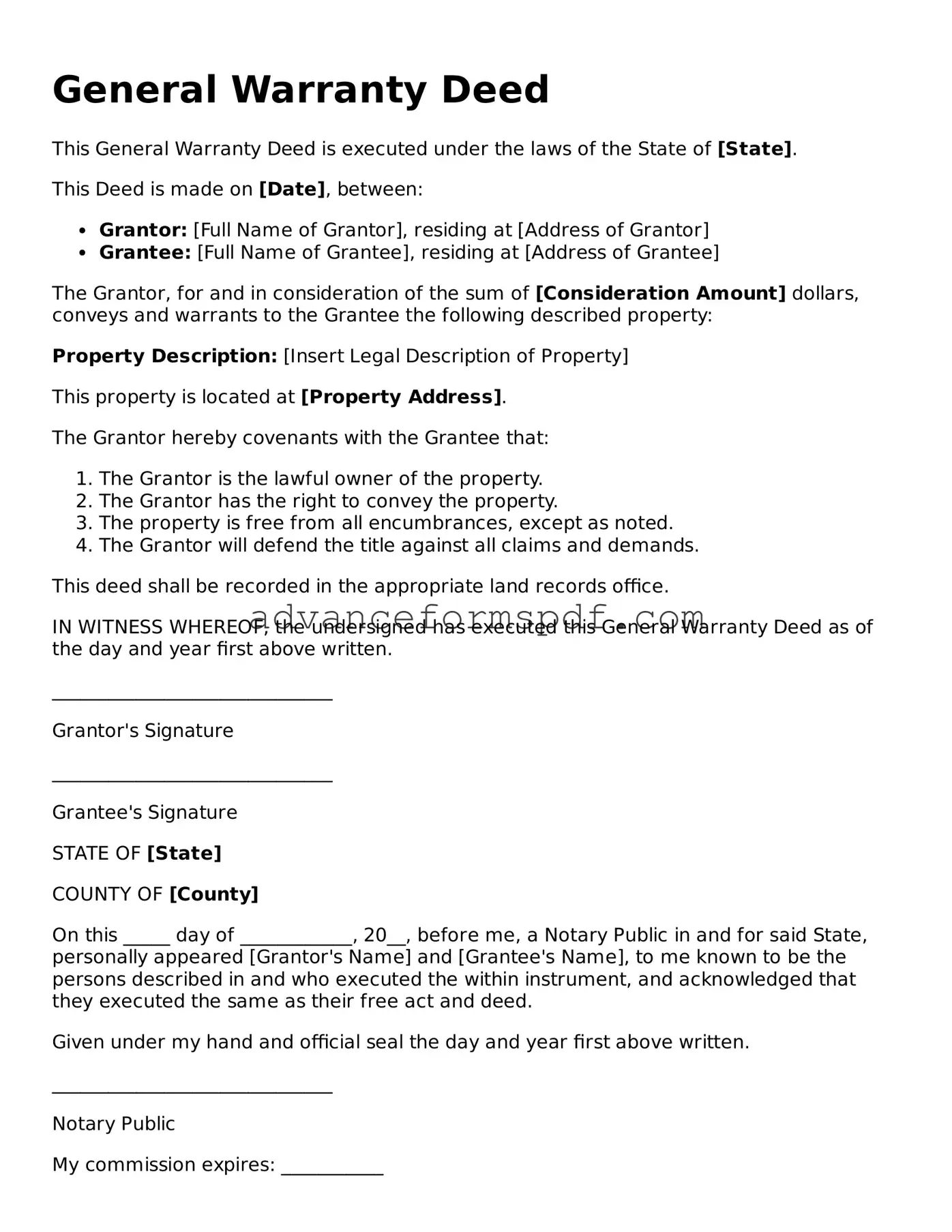General Warranty Deed
This General Warranty Deed is executed under the laws of the State of [State].
This Deed is made on [Date], between:
- Grantor: [Full Name of Grantor], residing at [Address of Grantor]
- Grantee: [Full Name of Grantee], residing at [Address of Grantee]
The Grantor, for and in consideration of the sum of [Consideration Amount] dollars, conveys and warrants to the Grantee the following described property:
Property Description: [Insert Legal Description of Property]
This property is located at [Property Address].
The Grantor hereby covenants with the Grantee that:
- The Grantor is the lawful owner of the property.
- The Grantor has the right to convey the property.
- The property is free from all encumbrances, except as noted.
- The Grantor will defend the title against all claims and demands.
This deed shall be recorded in the appropriate land records office.
IN WITNESS WHEREOF, the undersigned has executed this General Warranty Deed as of the day and year first above written.
______________________________
Grantor's Signature
______________________________
Grantee's Signature
STATE OF [State]
COUNTY OF [County]
On this _____ day of ____________, 20__, before me, a Notary Public in and for said State, personally appeared [Grantor's Name] and [Grantee's Name], to me known to be the persons described in and who executed the within instrument, and acknowledged that they executed the same as their free act and deed.
Given under my hand and official seal the day and year first above written.
______________________________
Notary Public
My commission expires: ___________
